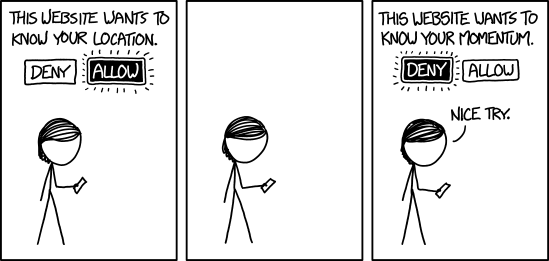I guess you mis-understood my comment, I was only talking about TDS and doing it in software rather than building a specialized analog box to do it.
When I read Richard's papers I realized I could make an HP spectrum analyzer (~1980 vintage) do it and get the phase wrap you describe, etc. by offsetting the IF i.e. shifting the time window that the "radio" is looking at from the stimulus (sin sweep in frequency).
Hi Scott
No, I understood what you meant, I was talking about what you get using some of what is available to measure loudspeakers with using that approach.
Yeah, it turns out Richard was a Ham radio operator, when I saw that stuff in the archive room the light went on exactly how he made the connection.
In the 90’s I had some software called Hypersignal, sort of early DSP drag and drop building block software (which I loved but stopped running after win98) and had built up sections of the ETC /TDS system.
I got all the sections to work but it lost sync which everything was tied together. Unfortunately the company went under which made me sad.
Do you know of anything like that now days?
TDS nowadays is an antique in it's available displays and post processing.
Re: Speaker resonance
Intriguing idea:
DEVICE TO EFFECTIVELY ELIMINATE THE MOTION INDUCED BACK EMF IN A LOUDSPEAKER SYSTEM IN THE REGION OF FUNDAMENTAL ACOUSTIC RESONANCE
If you have a dual coil speaker, please test it (at least circuit of Fig.2) and report back.
George
Intriguing idea:
DEVICE TO EFFECTIVELY ELIMINATE THE MOTION INDUCED BACK EMF IN A LOUDSPEAKER SYSTEM IN THE REGION OF FUNDAMENTAL ACOUSTIC RESONANCE
If you have a dual coil speaker, please test it (at least circuit of Fig.2) and report back.
George
I haven't used the TDS box- what's the length (time-wise) of the sweep?
Hi Sy
If I wasn’t packed up to move, I would invite you over and show you, i mean to a while back.
A quick explanation how it works
https://www.clear.rice.edu/elec301/Projects00/elec301/TDS/tds.html
If you can find it on line, look for “Determination of Loudspeaker Signal Arrival Times”
Governing parameters about page 49 here;
http://www.gold-line.com/pdf/manual/soundlabfordos_tdsmanual.pdf
A friend explains the “where is time zero” issues taking an ETC
http://www.excelsior-audio.com/Publications/Phase_Response_&_Receive_Delay.pdf
Doug Jones, Professor Emeritus who was a friend of Dicks, friend of mine and co-worker at Danley sound Labs has, compiled AND made available essentially everything in the archive .
Richard C. Heyser - College Archives - Columbia College Chicago
Best,
Tom Danley
Tom- where are you moving? Still here in the area?
I'm pretty familiar with the theory of TDS, the question was more practical; to get the great s/n you talked about, what measurement time is needed? IOW, the actual length of the sweep. When I do comparisons to things like MLS or Hadamard, that's always the tradeoff, measurement time vs s/n.
I'm pretty familiar with the theory of TDS, the question was more practical; to get the great s/n you talked about, what measurement time is needed? IOW, the actual length of the sweep. When I do comparisons to things like MLS or Hadamard, that's always the tradeoff, measurement time vs s/n.
Do you know of anything like that now days?
TDS nowadays is an antique in it's available displays and post processing.
Angelo Farina sells Audition plugin's that implement the algorithms he publishes in his research. I know this is not exactly the same but it shows a software only solution of an equally complex problem. It's just more maths. 🙂
http://web.arch.usyd.edu.au/~wmar0109/DESC9090/old/Farina_00.pdf
Last edited:
Tom- where are you moving? Still here in the area?
I'm pretty familiar with the theory of TDS, the question was more practical; to get the great s/n you talked about, what measurement time is needed? IOW, the actual length of the sweep. When I do comparisons to things like MLS or Hadamard, that's always the tradeoff, measurement time vs s/n.
Can't beat Heisenberg, that spectrum analyzer at 3Hz IF BW crawled across the screen.
Apt remarks in the conclusion - it's all very, very hard ...
The pragmatic approach is to use the ears to detect whether audibly significant distortion is occurring - which is only the first step, after all - and devote most of the energy on resolving the causal factors. And aural detection is easy if the right source material is used - picking the right "excitation frequencies" IOW.
Thanks Tom the the Heyser archive access. It is wonderful! Best thing I have seen in recent times. That's Richard all right!
Richard Heyser - "Believe me, subjective audio is a lot harder to analyze than quantum mechanics, and things are going to get a lot more difficult to handle as we progress in these brief discussions" ... I love it ... !!!
http://digitalcommons.colum.edu/cgi/viewcontent.cgi?article=1023&context=cadc_heyser_unpublished ... veeeerry impressive ...
And, http://digitalcommons.colum.edu/cgi/viewcontent.cgi?article=1024&context=cadc_heyser_unpublished is the icing on the cake.
And, http://digitalcommons.colum.edu/cgi/viewcontent.cgi?article=1024&context=cadc_heyser_unpublished is the icing on the cake.
Last edited:
Mr. Elliot has some good stuff on current amps (variable impedance amp):
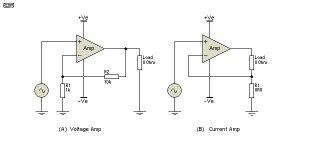
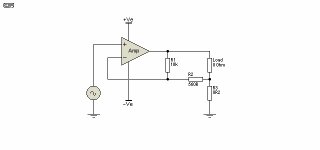
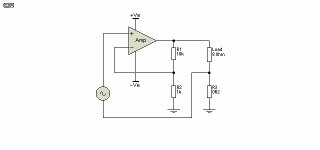
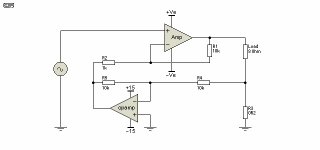

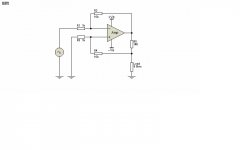
from:
Variable Amplifier Impedance






from:
Variable Amplifier Impedance
... speakers are designed for ideal voltage source amplifiers I don't see any change coming soon. The auxiliary issues require some user intervention, I see this lack of plug and play a show stopper. ...
You're right as usual. Me, I'm tip-toeing out the back door with Richard....
😎
sputter, flutter, pflpflp...
Dear fine Sirs,
I hope to raise a valid point for your consideration. Of course, most drivers are designed for v drive but that doesn't mean we can't find some that are appropriate for c drive.
Current drive, of course, isn't meant for the majority of drivers but Esa Merilainen in
CH-11: creates nice c drive speak from: P17WJ-00-04 and PL18WO09-04
CS-12: D2905/970000 / D2905/990000
CS-8: PL11WH09-04 / w no tweet!
http://www.datasheets.pl/SPEAKERS/VIFA/PL11WH0904.pdf
http://www.troelsgravesen.dk/Jensen_files/D2905-9900.pdf
http://www.datasheets.pl/SPEAKERS/VIFA/PL18WO0904.pdf
...
I'll post some sch from scans at work.
Cheers,
Jeff
I'll upload pics tomorrow from work.
... speakers are designed for ideal voltage source amplifiers I don't see any change coming soon. The auxiliary issues require some user intervention, I see this lack of plug and play a show stopper. ...
You're right as usual. Me, I'm tip-toeing out the back door with Richard....
😎
sputter, flutter, pflpflp...
Dear fine Sirs,
I hope to raise a valid point for your consideration. Of course, most drivers are designed for v drive but that doesn't mean we can't find some that are appropriate for c drive.
Current drive, of course, isn't meant for the majority of drivers but Esa Merilainen in Current-Driving of Loudspeakers talks about:
CH-11: creates nice c drive speak from: P17WJ-00-04 and PL18WO09-04
CS-12: D2905/970000 / D2905/990000
CS-8: PL11WH09-04 / w no tweet!
http://www.datasheets.pl/SPEAKERS/VIFA/PL11WH0904.pdf
http://www.troelsgravesen.dk/Jensen_files/D2905-9900.pdf
http://www.datasheets.pl/SPEAKERS/VIFA/PL18WO0904.pdf
...
I'll post some sch from scans at work.
Cheers,
Jeff
Someone I know offered to give me an old plotter table that was being thrown out by their company. If I accept, what am I getting myself into?
Guys, who are interested in Heyser, try "The Great Pretender" article on group delay. I remember discussing this with him over 35 years ago, but I am still in the dark as to how to improve the situation.
Someone I know offered to give me an old plotter table that was being thrown out by their company.
If I accept, what am I getting myself into?
Is this an HP? You might have to run DOS to get the plotter software to work. The pens might be available from a third party,
but HP stopped making them.
I didn't ask. I was told it was from the 80's, but you know how bad some people's estimates of age can be (plus or minus a decade...).
If I can't find a good use for it, I'll be dismembering it for scrap or maybe trying to turn it into a mill. What can these things do?
If I can't find a good use for it, I'll be dismembering it for scrap or maybe trying to turn it into a mill. What can these things do?
- Status
- Not open for further replies.
- Home
- Member Areas
- The Lounge
- John Curl's Blowtorch preamplifier part II
